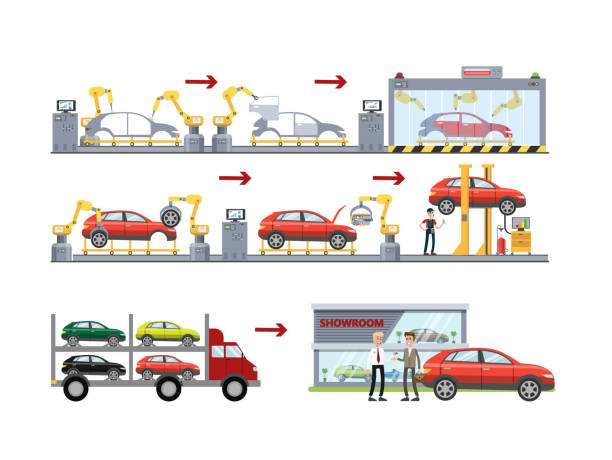As Bill Gates famously said, “Content is king.”
Creating high quality content is one of the most important strategies for China Admissions, in our mission to educate, and inspire students and drive our growth.
I want to turn this into an amazing blog, and to do that it needs amazing blog posts. I want to create high quality content that I’m proud to share.
I’m not there yet.
After posting everyday on this blog for 40 days, I have started wrestling with the question: Quality Vs Quantity. It’s great to build momentum by posting everyday. But is it the optimum strategy?
As you post content more, the thinking goes, quality improves. Practice makes perfect.
On the other hand, sometimes you need to remove things to make it better, or spend more time to make it better. Less > More.
Can you have both quality and quantity? Or is there a trade off? At what point? What is the relationship between quantity and quality?
Quantity Vs Quality
Quantity is easy to understand. More.
But quality is more subjective.
In order to make quality content, you first need to understand what it is.
What is quality content?
As recommended by Jason Calacanis, I’ve been reading Stephen King on writing and love the simplicity in the way that he writes.
Seth Godin is another great writer.
High quality content is beautiful, engaging, simple and addictive.
In comparison, I feel my articles are clumsy, course, unrefined. I would just write out the blog post and share it and move on.
I have an endless flow of ideas and i’m excited to share them. My biggest strength is “Ideation”, according to the strengths finders test.
But they need to be fully developed.
The Ideal Writing Process

Just like the production of a car, there are distinct stages. The plan, the raw materials, the designs, the construction, the processes, the testing.
Writing is the same. If you want to create high quality content at scale, it needs a production process.
- Planning
- Research
- Writing
- Editing
- Promoting
The Lean Writer
But a blog post is not a car. It is, just like the lean startup, better to create a product prototype, and then get feedback and improve it later.
It is very hard to reach the perfect blog post. You can just keep improving.
You can get quantity AND quality if you release content and then improve it later.
So I’m going to share my plan and notes below about this topic: “What makes a great blog post”, and come back to this article later to improve it. Subscribe if you’d like to see the final one.
So, what makes a great blog post?
Blog Post Quality = (Size of Problem X Solution ) X Market)
I think the quality of a blog post depends on how big the problem is for the person reading it and how well the blog post solves this problem. Or: Quality of Blog Post = How big of a problem is the blog post seeking to solve, multiplied by how well it solves it, multiplied by How big of a market it is.
How do you create a great blog post?
– Intro / what it takes
– Research / planning
– Writing
– Improvements
– Promotion
– Recommended Resources
What it takes?
- It should take some time. Be prepared to budget that time. Don’t try to rush it.
- What are the stages needed? It took me 30 minutes to research and write the first plan for this article. Research, Planning, Writing, Editing, Promotion. They are all distinct stages. It’s good to do them separately. What happens in each of them?
- Formatting, 12 words per line, and in the middle of page. Constraint width. Perfect font and size. Table of contents.
Remove the sidebar. It is distracting. Increased conversions by 71% by putting it at the bottom. Sidebar Vs without sidebar.
Use lists - Speed of the site – a plugin you can use.
- Make it skimmable. Lists, bold important parts so it can be easily skimmable.
- Image captions are important too.
- Google analytics.
- Structure of the site.
- No part of the page is a wall of text, it needs a good balance.
- Read and re-read it.
Research & Planning
- Make a plan for the article first. Do an article plan while researching. Beginning, middle, end.
- The highest tower strategy. Build the best article on the internet by far.
- 10% of time in planning goes a long way!
- Understand the reader – what do they want? (It’s me a few days ago before writing this – what would I have liked). Concise, easy to read.
- Check google, and check competition. Make something different. Make something unique.
- Longer content is usually better. How long should it be?
- Choose a topic that interests you. How to find topic ideas here. Hubspot blog topic generator is here.
- Related topics? – What are the best blog posts? – Blog post templates – Blog post examples – How to write a blog post? – How to write a blog post for SEO
Writing
- Explain yourself and why you’re interested in this topic / your relationship to the topic.
- Headlines should be concise, and engaging. Think of 25 article headlines.
- Create a hook / emotionally engage, with some examples.
- Use images well – check out this article’s images. How do you choose great images? Use amazing images, then put an amazing image there of wildlife or something. How to use amazing images?
- Write a great introduction and make it captivating.
- Break down sentences and paragraphs into small parts. Make it easier to navigate.
Improvements
- Keep re-writing it. After you’ve written it once, write it out again.
- Just write more and more!
- Quality Vs Quantity – where do you sit on that spectrum?
- Take a writing course. There are many copyrighting courses online that can improve your writing. Check out “Why I write?”
- Practice! Just keep writing. Write 1 article a day. Start writing bad content, over time it will become better.
- Seek feedback
Promote your blog post:
- SEO.
- Repurpose your blog post for social media eg., twitter, youtube video etc.,
- Answer questions on Quora, and post links on reddit.
- Look for places to do guest posts
- Leave comments on related blog posts by other people.
More Resources
Recommended reading here.
Marketing school podcast.
Hubspot guide here.
Writing great headlines.
Masterclass here.
How to set up a blog? Some resources here.
https://9clouds.com/blog/15-blog-formatting-tips-increase-readers-time-on-page/
Seth Godin – interview
